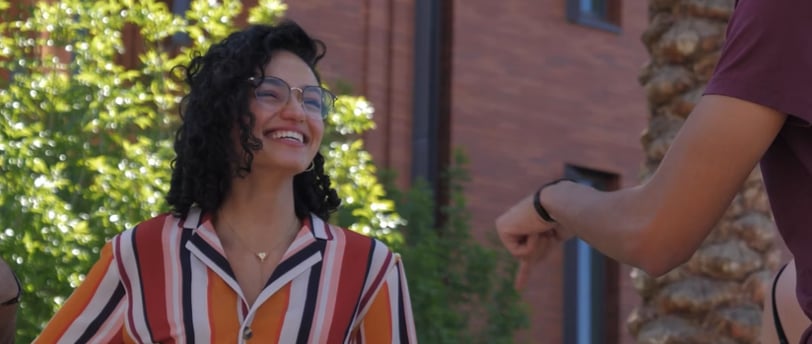Empowering businesses with cutting-edge solutions in AI, application development, Consulting and testing services....
Arizona State University personalizes learning and advances research with ChatGPT
Arizona State University(opens in a new window) (ASU) is one of the largest public universities in the United States, serving 181,000 students in a given year and offering over 800 degree options. For nine straight years, U.S. News and World Report has named ASU the most innovative university in America. Today, ASU is enhancing educational outcomes by integrating ChatGPT Edu into projects across teaching, research, and operations. Guided by the ASU charter, which prioritizes inclusion over exclusion, research benefiting the public, and responsibility for the communities they serve, ASU collaborates with OpenAI to use technology to deliver lifelong learning and drive human potential at a social scale.
12/1/20242 min read


Arizona State University(opens in a new window) (ASU) is one of the largest public universities in the United States, serving 181,000 students in a given year and offering over 800 degree options. For nine straight years, U.S. News and World Report has named ASU the most innovative university in America.
Today, ASU is enhancing educational outcomes by integrating ChatGPT Edu into projects across teaching, research, and operations. Guided by the ASU charter, which prioritizes inclusion over exclusion, research benefiting the public, and responsibility for the communities they serve, ASU collaborates with OpenAI to use technology to deliver lifelong learning and drive human potential at a social scale.
Democratizing higher education and creating ‘lifelong learners’
In the spring of 2024, ASU graduated 20,000 students—its largest class yet. “No two people learn in exactly the same way, and innovation has proven to be the most powerful asset that we have,” says Michael M. Crow, President of ASU. “Essential to ASU’s success is that we use technology, and now AI, to deliver lifelong learning and to drive human potential.”
By bringing ChatGPT into higher education, ASU is setting a new precedent for universities to enhance learning, creativity, and student outcomes while remaining committed to leading in innovation and responsible use of technology. President Crow envisions a future where AI will continue transforming higher education, making it more personalized and inclusive. “Higher education in 50 years will be highly diversified, technologically enhanced, and throughout a person’s life.”
Deploying ChatGPT in over 200 projects
ASU adopted ChatGPT the same way it adopted other technology: by being intentional about its impact. “What we’ve learned at ASU is that if you want to focus on the impact of technology, start by asking the community what they want to solve for,” says Lev Gonick, ASU's Chief Information Officer.
The AI Innovation Challenge(opens in a new window) was a product of this mindset. In February 2024, ASU invited faculty and staff to submit proposals for using ChatGPT to maximize their teaching, research, and operations. Submissions required a clear plan for integrating ChatGPT into one of three priority areas:
Supporting teaching and learning: Proposals that enhance the educational experience for students and faculty within a class setting.
Advancing research for public good: Proposals that support student—and faculty-led research that demonstrate a clear path to making meaningful community and planet contributions.
Enhancing the future of work: Proposals that contribute to a more positive, productive, and supportive work environment.
Within weeks, the ASU team received proposals representing more than 80% of ASU’s schools and colleges. “We thought we'd get a few early adopters,” says Gonick. “Our few adopters quickly became hundreds of faculty interested in using ChatGPT for research and in the classroom.” The demand was so high that in March, ASU initiated a second round of proposals that included student researchers.
By July, ASU had received over 400 proposals, with more than 200 projects activated across the majority of their departments and colleges.